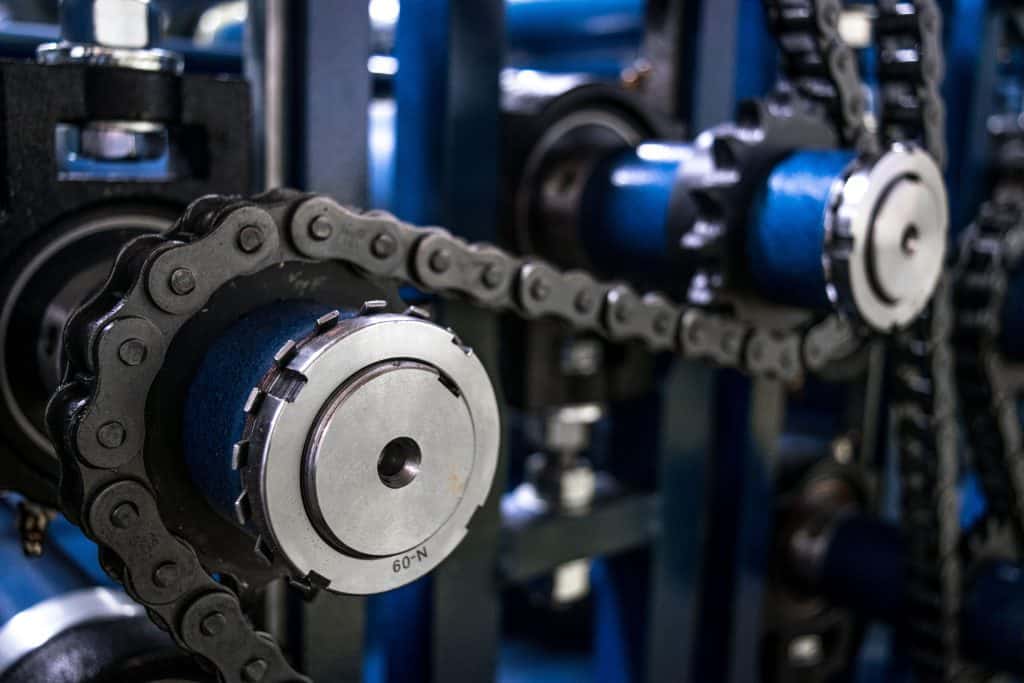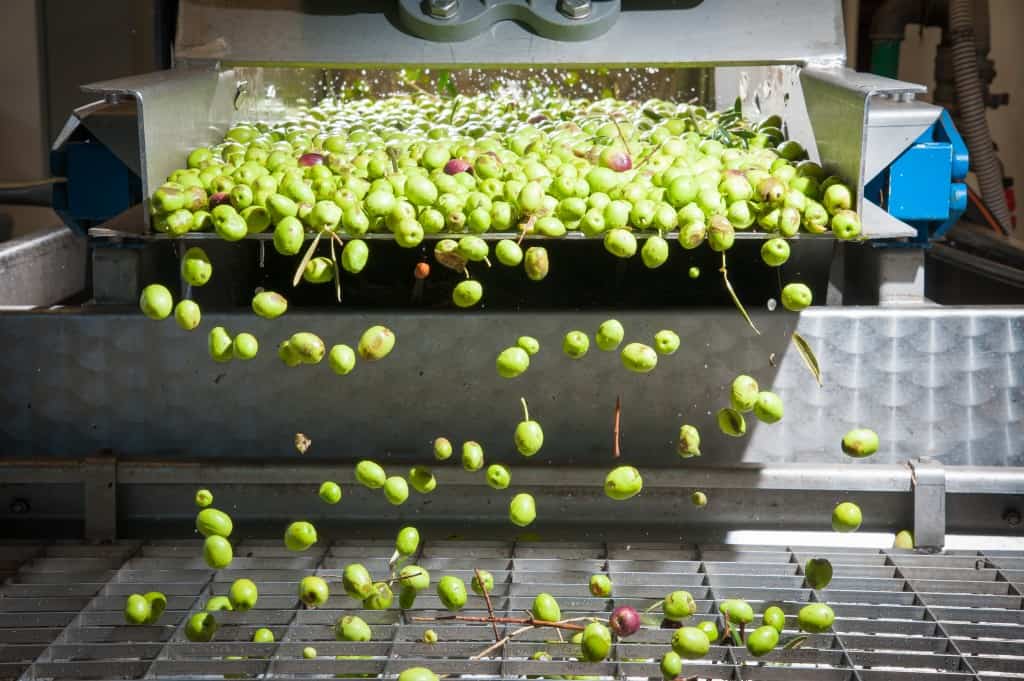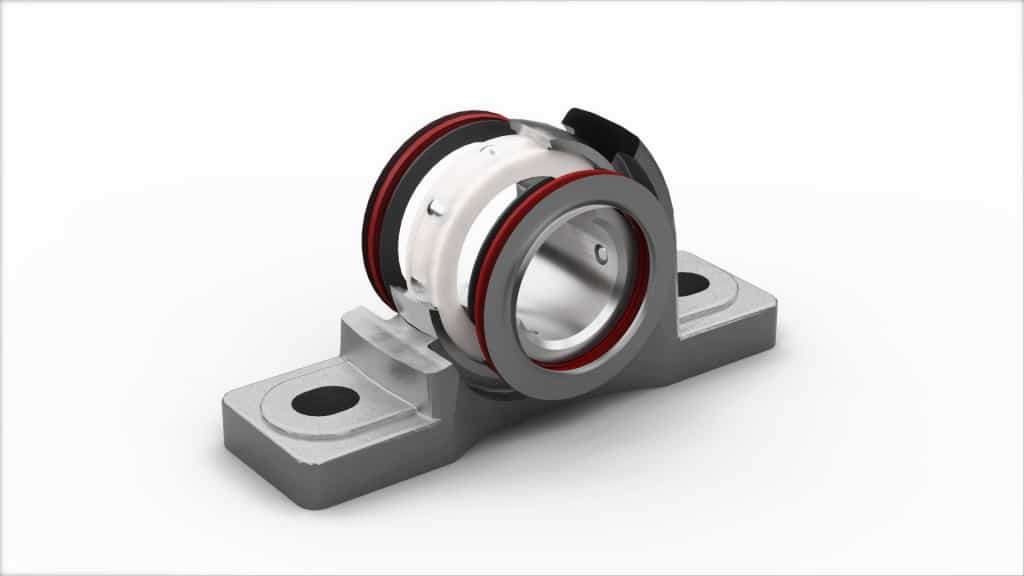Roller Chain Stiffening? Here’s What to Do

Your roller chain is an essential part of your power transmission drive, and it’s crucial that it operates smoothly. Over time, with roller chain stiffening, links in the chain and sprockets will experience undue stress. We recommend addressing any problems with chain stiffness quickly to prevent permanent damage.
When troubleshooting a chain drive, it’s best to start with the most common causes. Reviewing the proper installation techniques and checking lubrication are the right places to start. Many issues can be at the root of roller chain stiffening, so let’s work through them one by one.
Was the chain installed properly?
The most common installation issue we see is misalignment. Even the slightest issues with alignment can create big problems. Sprockets and shafts are the most common culprits. When installing your roller chain, make sure these components are aligned by testing in multiple places. The key is to check in multiple areas for angular alignment of your shafts and axial alignment of your sprockets. Being as accurate as possible with these measurements and dimensions is essential.


Is your chain well lubricated?
Proper lubrication is essential for roller chain maintenance. Without adequate lubrication, your drive will deteriorate, breaking down and even becoming unusable in some cases. Roller chain stiffening is a certainty without proper lubrication.
Frozen, seized, or stiff chain is often the result of corrosion. Any corrosion or rust will make the moving parts of your roller chain resistant to movement. In these cases, efficiency goes out the window, and premature wear of all chain components sets in. Fortunately, it is possible to mitigate corrosion by maintaining a well-lubricated drive.
When was your chain last maintained?
Nothing lasts without regular maintenance. Your roller chain may become stiff as foreign material becomes packed into the chain. With so many moving parts, it’s easy for roller chain to become gunked-up. Sawdust, plastic shavings, metal dust, and dirt are all frequent offenders.
Lubricants can mitigate the build-up of contaminants, but lubrication will not solve every problem. Regular cleaning when build-up occurs is part of a good maintenance routine. When your chain becomes hindered by material and does not need replacing, a thorough cleaning with kerosene followed by relubrication will get your roller chain working again. It’s also important to remember that grease will make the problem worse, not better. Always use oil. In roller chain applications, grease will seal off critical surfaces from necessary lubrication. Additionally, grease acts as a magnet for contamination build-up.
As with anything, an ounce of prevention (or in this case, cleaning) is worth a pound of cure. Chain guards are not strictly for safety; they can also cut off the ingress of contaminants. Maintaining a clean operating environment where possible can also go a long way in preventing issues.
How fast is too fast?
High speeds put your chain at risk for excessive wear, especially if your lubrication system isn’t up to the task. But that’s not the only risk – a chain can seize up if the drive speed is too high.
When a roller chain is in motion, there are several points of movement. The pin and bushing, bushing and roller are all in constant contact. When the drive moves too quickly, one or more of those intersections can stop working as intended.

Each chain has specific speed ratings, depending on several factors. When chain velocity is high, and the selected lubrication method can’t keep up with demands, this will cause increased friction, creating roller chain fatigue. Once one component sees increased friction against another, the effect cascades, making it difficult for your roller chain to rotate around the sprocket. Your drive will lose chain slack, and the tension will increase. Over time, this problem will worsen and affect more of your drive.
What about excessive load?
Similar to excessive speed, an excessive load can cause a stiff chain. Your roller chain has a maximum load capacity. When the drive exceeds this rating, the chain quickly becomes fatigued and can even bend.
The image below shows an example of an extreme load putting too much strain on a chain. You’ll note the parts have deformed and will no longer articulate or operate properly. The roller-link is pulling against the pin-link with so much force that, rather than allowing rotation, the parts bind. The pins, rollers, and bushings all push and pull against each other, leading to a cascading problem. This causes stiffness in the roller chain, and eventually, the chain won’t function.

This problem is most easily avoided while designing your system. Make sure your roller chain is rated for both the speed and capacity of your prime mover. Your chain can only do what it can do. Pushing it beyond its specifications will lead to problems and potentially a costly shutdown.
While stiff chain is not typical in roller chain applications, as always, proper installation and good lubrication go a long way in the prevention of most problems. Occasionally chain may need to be cleaned as well. Finally, ensure your drive is within velocity and load limits.
Questions or concerns about your roller chain or the efficiency of your assembly? We provide a number of helpful articles and resources with answers to your questions. Access our Knowledge Base here.
Sort by category: Case Studies & Solutions, Installation & Maintenance, Lubrication
Sort by topic: Lubrication, Lynx, Maintenance, Roller Chain




